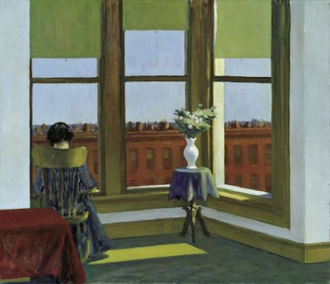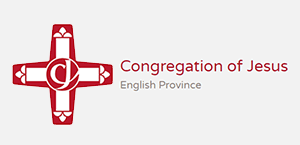Gospel in Art: Whoever is not with me is against me

Room in Brooklyn, by Edward Hopper 1932 © Museum of Fine Arts, Boston
Source: Christian Art
Gospel of 27 March 2025
Luke 11:14-23
At that time: Jesus was casting out a demon that was mute. When the demon had gone out, the mute man spoke, and the crowd marvelled. But some of them said, 'He casts out demons by Beelzebul, the prince of demons', while others, to test him, kept seeking from him a sign from heaven.
But he, knowing their thoughts, said to them, 'Every kingdom divided against itself is laid waste, and a divided household falls. And if Satan also is divided against himself, how will his kingdom stand? For you say that I cast out demons by Beelzebul. And if I cast out demons by Beelzebul, by whom do your sons cast them out? Therefore they will be your judges. But if it is by the finger of God that I cast out demons, then the kingdom of God has come upon you. When a strong man, fully armed, guards his own palace, his goods are safe; but when one stronger than he attacks him and overcomes him, he takes away his armour in which he trusted and divides his spoil. Whoever is not with me is against me, and whoever does not gather with me scatters.'
Reflection on the painting
"Whoever is not with me is against me," we read in today's Gospel. We are challenged to examine which side of the battle we are fighting on: are we with Jesus or against Him? Naturally, we would all claim to be on His side, yet our actions often reveal the contrary. There is a constant tension in our faith, where in our hearts we feel aligned with Jesus, but in our actions, we prove otherwise. We experience this division and frustration within ourselves, especially during Lent, when we take a closer look at our lives. Lent is a beautiful season, an opportunity to step back from distractions and spend more time alone with God, much like the woman in our painting, pausing for a quiet moment of reflection at home.
Edward Hopper was a master at capturing solitude and introspection in his art. His paintings often depict lone figures immersed in quiet contemplation, bathed in the soft light of a window or lost in thought amid an empty room. While his works are sometimes associated with isolation and loneliness, they also evoke a sense of profound stillness, one that invites the viewer to reflect. In many ways, his art resonates with our Lenten journey. I recently read an article that remarked, in light of Covid, "we are all Edward Hopper paintings now." However, there is a distinction between the loneliness often ascribed to Hopper's work and the sacred solitude we seek in faith. As Christians, we intentionally carve out moments of quietness: not to be alone in despair, but to step away from the noise of life, to find God.
Hopper was deeply influenced by French Impressionism, but his work took on a distinctly American character, capturing the alienation and introspection that often accompanied life in the 20th-century United States. As the cities in the USA at the beginning of the 20th century increasingly got bigger and bigger, Hopper found that people got lonelier and lonelier, more and more isolated.
LINKS
Gospel in Art: https://christian.art/
Today's Reflection: https://christian.art/daily-gospel-reading/luke-11-14-23-2025/ (with audio)

















